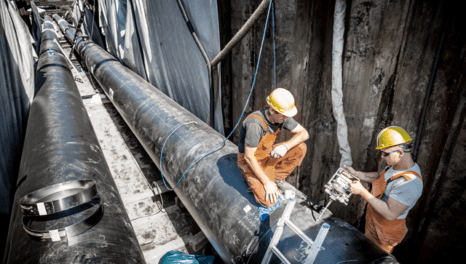Time to change or fail
Matt Hastings, programme director at Centrica's Cornwall Local Energy Market, explains the importance of disrupting your own business model.
12th June 2018 by Networks

For today’s utility companies, if you are not trying to transform your business, chances are you’re closer to failure than you think. It’s a very competitive market out there. Established business models are disappearing, consumers are all powerful and technology is levelling the playing field faster than regulators can keep up.
Survival will be marked by those organisations that encourage constructive disruption: the process of deliberately changing your existing business model before someone beats you to it.
I’ve heard enough about change and innovation; about how what happened with Uber and Airbnb is going to happen to utilities. The reality is that it is happening to utilities already, in some cases by utilities themselves, often driven by internal innovators, passionate graduates and ambitious leaders who recognise the old world is nearly dead.
While disruption can spook traditional businesses, we have to remember that consumers are at the top of the food chain. They are in charge of our destiny. They are taking more control with things like smart heating controls, solar panels and electric vehicles (EVs).
Buying and selling energy
We’ve partnered with forward thinking organisations like Western Power Distribution, National Grid, Exeter University and Imperial College to embrace this consumer revolution and provide a solution for consumers to take charge. Part funded by the European Regional Development Fund and £6 million of our own money, the £19m Cornwall Local Energy Market (LEM) project will demonstrate how local markets can help reduce grid constraints, make things simpler for consumers and encourage more renewable generation to connect.
While we can’t yet create an entirely new electricity grid, we can improve the one we’ve got. We can better manage all our energy assets, in fact. By empowering consumers with technology, both residential and business, we can change the way energy is bought and sold.
The Cornwall LEM simplifies the complexities of national markets in an easy-to-use virtual platform. It helps homes, businesses and renewable generators make or save money, and in the process, helps the grid. It’s very easy to use, hiding the complexity behind the scenes.
Traditionally, homes and businesses buy electricity from one supplier, but we can change this to allow homes and businesses to sell electricity to each other, as well as to the grid, to increase flexibility and reduce pressure on our traditional infrastructure. It gives buyers an alternative to a traditional energy supplier, while giving owners of energy assets a place to sell excess electricity.
In Cornwall there are wind farms being curtailed next door to large energy users that can’t increase their import, it’s sub optimal market design to say the least. The potential impacts for economic growth could be huge if we can solve this problem.
For residential participants, the process of buying and selling their energy or flexibility is automated so they can act as mini power stations without dealing with the trading themselves. For businesses, this platform can open up new revenue streams, reducing their energy bill.
Take The Olde House, a holiday site in Cornwall. The site already had solar panels but this energy wasn’t always being used when it was being produced. The LEM helped to fund and install energy storage machines to store this excess energy for use later in the day, reducing its reliance on the grid with a 50 per cent reduction in grid imports during peak times. The next step is making the spare capacity in these energy storage machines available to the grid, or to other energy users.
To take the LEM one step further, Centrica has partnered with blockchain pioneers, LO3 Energy. This will allow us to test a range of energy transactions, such as multi-party peer-to-peer trading in a secure way. It will also open up the door to scale.
It’s clear there’s an appetite for changing the way we use and generate electricity. While these sorts of projects are still in trial stages, we’re only a few years away from it becoming mainstream. As the price of technology like solar panels, batteries and EVs come down in price, more and more people will be choosing to play their part in transforming the energy system. The time has come to develop a taste for constructive disruption. It is time to change or fail.
Comments
Login on register to comment
Related content

Heat
Electric storage heating – a Cinderella solution
Why has electric storage heating been overlooked as we seek to tackle decarbonising domestic heat?

Heat
Prospects bright for landmark East London Heat Network
New Vattenfall-Cory partnership marks step towards record-breaking heat network capable of serving over 10,000 homes

Heat
New construction director at Switch2 Energy
Appointee brings experience from Vattenfall and Eon
Related supplier content

Power
Load patterns and lockdown: how Covid-19 is impacting electricity networks
Insights into dynamics on the low voltage network as the outbreak unfolds

Downloads
Protect electrical equipment from insulation failure
Insulation faults are a major cause leading to the eventual failure of electrical equipment. Partial discharge (PD) is a very reliable indicator of developing insulation faults. Regular PD testing allows users to detect and analyze PD activity

Heat
How E.ON. is helping the City of London become a zero emissions city
Discover Citigen. Deep in the heart of our bustling capital